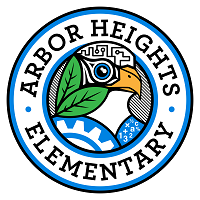Advanced Learning Opportunities and Homework Policy
Advanced Learning Opportunities at Arbor Heights
For more information about Advanced Learning Opportunities, please visit the Seattle Public Schools Department of Advanced Learning.
Homework Policy
We believe all K–5 children benefit from a rich reading life at home. We encourage at least 20 minutes of daily reading, which can be a combination of looking at picture books, reading with an adult, reading independently, or other reading activities.
Brain research also shows that repeated exposure to math concepts is beneficial. As a result, we also want students to do some math work at home. That can be something the teacher sends home that matches the day’s lesson, or it can be something that a family chooses — playing go fish, counting coins, working on math facts, playing chess, talking about time, playing dice games, puzzle completion for problem-solving, etc. You can find additional ideas for supporting your mathematician at home by visiting SPS’s online elementary math family support page. Rich resources specially designed for elementary mathematicians and their families are also available online at the SPS website.
Special Projects
Sometimes, a teacher will assign a special project at school that requires a little prep work at home. Examples include interviewing a family member, thinking of ideas for a STEM or visual arts project, exploring garden ideas, tackling a physical education goal, etc.
How Long Should Homework Take?
- 20 minutes of reading for Grades K–1
- 20 minutes of reading Grades 2–3
- 20 minutes of reading Grades 4–5
Teachers at Arbor Heights want to work with families so that children and parents enjoy learning at home, and we are open to alternate assignments. Please talk to your child’s teacher if you have questions.
